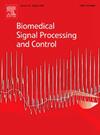随机缺失模态下多模态脑肿瘤分割的自适应辅助扩散
IF 4.9
2区 医学
Q1 ENGINEERING, BIOMEDICAL
引用次数: 0
摘要
在数据完整的情况下,基于多模态MRI的脑肿瘤分割方法具有很好的效果。在临床环境中,由于人工制品和设备问题,缺乏模式往往使这些方法无效。目前的研究试图训练一个通用模型,以适应15种不同的随机组合的缺失模式。然而,由于缺失模态组合在不同情况下的随机性和复杂性,单个模型在动态调整其处理策略以适应特定缺失模态场景时面临挑战,最终导致分割精度降低。在这项工作中,我们引入了一个端到端的不完全多模态弥散脑肿瘤分割(IMD-TumorSeg)框架,该框架旨在处理各种缺失模态的场景。具体而言,该模型为每个模态集成了独立的生成模块,并引入了自适应条件集成机制来动态调整缺失模态和可用模态之间的权重融合。此外,提出了一种注意力驱动的扩散策略,以促进扩散过程与分割网络之间的协同学习。此外,通过集成图像估计器,该框架实时评估生成图像与真实图像之间的相似性,优化生成过程,确保生成图像的视觉和语义一致性。在BraTS 2018和BraTS 2020数据集上的大量实验结果表明,与最先进的方法相比,IMD-TumorSeg在处理缺失模式方面表现出卓越的性能和有效性。本文章由计算机程序翻译,如有差异,请以英文原文为准。
Adaptive auxiliary diffusion for multi-modal brain tumor segmentation with random missing modalities
Brain tumor segmentation methods based on multi-modal MRI perform significantly well when data is complete. In clinical settings, the absence of modalities due to artifacts and equipment problems often renders these methods ineffective. Current research attempts to train a universal model to adapt to 15 different random combinations of missing modalities. However, due to the random and complex nature of missing modality combinations across different cases, a single model faces challenges in dynamically adjusting its processing strategy to accommodate specific missing modality scenarios, ultimately leading to diminished segmentation accuracy. In this work, we introduce an end-to-end Incomplete Multi-modal Diffusion Brain Tumor Segmentation (IMD-TumorSeg) framework, which is designed to handle various scenarios with missing modalities. Specifically, the model incorporates independent generative modules for each modality and introduces an adaptive conditional integration mechanism to dynamically adjust the weight fusion between missing and available modalities. In addition, an attention-driven diffusion strategy is proposed to facilitate collaborative learning between the diffusion process and the segmentation network. Furthermore, by integrating an image estimator, the framework evaluates the similarity between generated and real images in real-time, optimizing the generation process and ensuring both visual and semantic consistency of the generated images. Extensive experimental results on the BraTS 2018 and BraTS 2020 datasets demonstrate that IMD-TumorSeg exhibits superior performance and effectiveness in handling missing modalities compared to state-of-the-art methods.
求助全文
通过发布文献求助,成功后即可免费获取论文全文。
去求助
来源期刊

Biomedical Signal Processing and Control
工程技术-工程:生物医学
CiteScore
9.80
自引率
13.70%
发文量
822
审稿时长
4 months
期刊介绍:
Biomedical Signal Processing and Control aims to provide a cross-disciplinary international forum for the interchange of information on research in the measurement and analysis of signals and images in clinical medicine and the biological sciences. Emphasis is placed on contributions dealing with the practical, applications-led research on the use of methods and devices in clinical diagnosis, patient monitoring and management.
Biomedical Signal Processing and Control reflects the main areas in which these methods are being used and developed at the interface of both engineering and clinical science. The scope of the journal is defined to include relevant review papers, technical notes, short communications and letters. Tutorial papers and special issues will also be published.
 求助内容:
求助内容: 应助结果提醒方式:
应助结果提醒方式:


